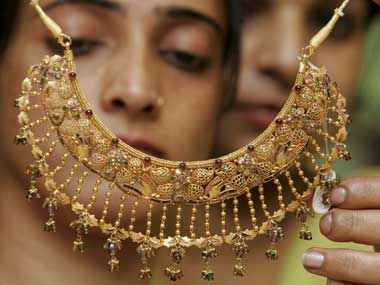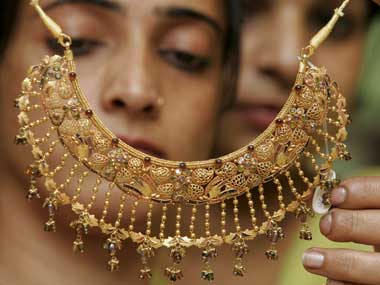In a bid to rein in the gold imports and attract investors away from physical assets, Prime Minister Narendra Modi has today launched three schemes based on the precious metal – gold monetisation scheme, gold sovereign bond scheme and gold coin and gold bullion scheme. At the launch, the prime minister said gold can be a great tool for women empowerment and that they would be the biggest beneficiaries of the new schemes. He also said gold bonds will be more beneficial than physical gold. Finance minister Arun Jaitley, meanwhile, said gold entering the banking system will boost growth. He also said the interest earned on the gold monetisation scheme will be exempt from income, wealth and capital gains tax. Here are all the key facts you need to know about the schemes: [caption id=“attachment_2495958” align=“alignleft” width=“380”]  Reuters[/caption] Gold monetisation scheme The scheme will replace the prevailing gold deposit scheme that started in 1999. Under the new scheme the minimum deposit at any one time shall be raw gold (bars, coins, jewellery excluding stones and other metals) equivalent to 30 grams of gold of 995 fineness. There is no maximum limit for deposit under the scheme. The gold will be accepted at the collection and purity testing centres (CPTC) certified by the Bureau of Indian Standards (BIS) and notified by the central government. Banks will issue deposit certificates in equivalence of the gold being deposited with them. The principal and interest of the deposit under the scheme will be denominated in gold. The designated banks will accept gold deposits under the short term (1-3 years) Bank Deposit (STBD) as well as medium (5-7 years) and long (12-15 years) term government deposit schemes. While the former will be accepted by banks on their own account, the latter will be on behalf of the government. There will be provision for premature withdrawal subject to a minimum lock-in period and penalty to be determined by individual banks. Interest on deposits under the scheme will start accruing from the date of conversion of gold deposited into tradable gold bars after refinement or 30 days after the receipt of gold at the CPTC or the bank’s designated branch, as the case may be and whichever is earlier. The RBI has notified an interest rate of 2.25 percent for medium term deposits and 2.5 percent for the long-term deposits. The existing deposits under the gold deposit scheme, 1999, will be allowed to run until maturity. Depositors can also make premature withdrawal of their deposits. [caption id=“attachment_2355816” align=“alignleft” width=“380”]  Reuters[/caption] Gold sovereign bond scheme The Reserve Bank of India (RBI) will issue these bonds on behalf of the central government. The central bank has fixed the issue price for the first tranche of sovereign gold bond at Rs 2,684 per gram of gold based on simple average of closing price of gold of 999 purity of the previous week (October 26-30, 2015) published by the Indian Bullion and Jewellers Association Ltd. The gold bonds will be denominated in multiples of gram(s) of gold with a basic unit of one gram while the minimum investment limit is two grams. The maximum subscription is 500 grams per person per fiscal (April-March) and for joint holders, the limit will be applied on the first holder. As per the scheme, the gold bonds will be sold only to resident Indian entities including individuals, Hindu undivided families, trusts, universities, and charitable institutions. The bond tenure will be eight years with exit option beginning the fifth year onwards. They will also be tradable in the bourses. The rate of interest will be 2.75 percent per annum payable semi-annually on the initial value of investment. Bonds can be used as collateral for loans. The loan-to-value (LTV) ratio is to be set equal to ordinary gold loan mandated by the RBI from time to time. India gold coin and bullion scheme The gold coin and gold bullion schemes are part of the gold monetisation programme. The coin will be the first ever national gold coin and will bear Ashok Chakra. It is being launched ahead of Dhanteras, the auspicious day related to Diwali for buying the precious metal. The aim is to cash in on festival fervour. Initially, the coins will be available in denominations of 5 and 10 grams. A 20 gram bullion bar will also be launched. As many as 15,000 coins of 5 gm, 20,000 coins of 10 gm and 3,750 bullion bars will be made available through MMTC outlets. How good are they from investing point of view? A section of experts feels the interest rates being offered (on both deposits and bonds) are attractive. As Gnanasekar Thiagarajan, director of Commtrendz Risk Management, told Firstpost , for people who have gold as an investment asset, it is a good opportunity to gain some interest out of it. “Gold is always written off as a zero-yield instrument compared to equities, which give dividend and fixed income which gives fixed interest. The GMS scheme might help to thrash that image,” he said. What about the taxation? As the finance minister has already clarified the interest earned from the gold monetisation scheme will be exempt from income, wealth and capital gains taxes. According to Alok Agarwal, senior director, Deloitee Haskins & Sells, interest on gold bonds shall be taxable as per the provision of Income Tax Act. “Further, to ensure that investors are indifferent from an income tax perspective vis-a-vis investment in physical gold, it has been stated that capital gains tax treatment for these bonds will be aligned with the existing tax provisions with respect to physical gold in the next Budget,” he said. But will the schemes succeed in bringing down gold imports? Very unlikely. For one, there is a section of experts who believe investors will still find 8 percent offered for bank deposits as more attractive. “The present scheme will not bring out even 20 tonnes of gold,” Anantha Padmanabhan, southern region head of the All India Gems and Jewellery Trade Federation, has been quoted as saying in a Reuters report. The reason is because investors fear that the tax department will hound them questioning the source of gold. According to Padmanabhan, quoted in the Reuters report, the government should have launched an amnesty for people to deposit up to 500 grams of gold without any questions. With inputs from agencies
Experts think the schemes are unlikely to succeed in bringing down gold imports
Advertisement
End of Article


)

)
)
)
)
)
)
)
)



